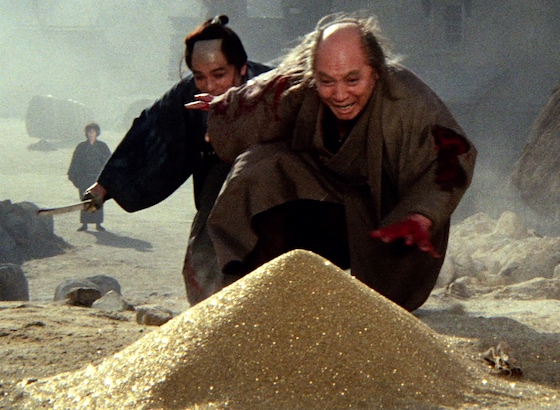aka Gojira
2019 #71
Ishirô Honda | 96 mins | Blu-ray | 1.37:1 | Japan / Japanese | PG
Before its current re-fashioning as a major US-produced blockbuster franchise, the rep of the Godzilla movies was more-or-less cheesy B-movie SF with cheap-n-cheerful “man in a suit” special effects. (I expect die-hard fans would disagree, but to outsiders looking in, I feel that’s fairly accurate.) But that certainly wasn’t how things started with the first movie. Indeed, this first movie was nominated for Best Picture at Japan’s answer to the Oscars, only losing to Seven Samurai. There’s no shame for any film in losing to Seven Samurai. It was also a pricey affair: the most expensive Japanese film ever made up to that point, costing almost a million dollars — ten times the average budget for a Japanese feature at the time.
But, more than just the blockbuster entertainment of its day, Godzilla is a serious-minded work. A giant monster stomping on cities — or, if you prefer, a man in a rubber suit stomping on models — may have soon become fodder for the kind of movie fans who enjoy pulp entertainment, but, in its original incarnation, it’s an analogy for the terror of the nuclear bomb. Released just nine years after the bombings of Hiroshima and Nagasaki, it’s one of the first films to deal with that scar on the Japanese national psyche. And lest you think this is something pretentious critics have projected onto the film after the fact, the movie itself draws the connection, with one character — a young woman, no less, as if to remind us of the recency of those events — commenting that she only narrowly escaped the bombings. A big part of why Godzilla still works as a film today, almost 70 years later, is because everyone involved is playing it straight, and the clear messages about the folly of mankind interfering with nature, and the futility of weapons, are powerful.
That’s not to say it’s perfect. Subplots get in the way, like a love triangle that manages to waste screen time while not really having any significant impact on the viewer. (Reportedly, a flashback scene that would have helped explain the connection between two of the participants was deleted because it slowed down the film. The romance is slow enough as it is, but you never know, maybe that extra clarity would have helped.) Conversely, some of the moral conundrums raised by the story are barely touched on. One of the main characters is a scientist who thinks mankind should study Godzilla rather than try to kill it, but other than him stating that fact and consistently looking miserable, the film doesn’t really do anything more to engage with his argument.
As for the stomping monster action, viewed with a modern eye the effects are of course a mixed bag (the miniature vehicles look like something you’d find in a toy shop, for example), but make some allowances and they’re still pretty darn effective. An underwater sequence that mixes footage of real divers with “dry for wet” shots of Godzilla and lead characters remains mostly convincing. Godzilla may have lost Best Picture to Seven Samurai, but it did win the award for special effects, and that’s one thing it does have over Kurosawa’s film, at least. I don’t know if those same awards had one for music, but if so I guess Akira Ifukube’s score wasn’t even nominated. It would’ve deserved it for the main theme alone, though, which has since become iconic for good reason.
The Godzilla franchise has come a long way and changed a good deal across the seven decades since this film’s release. It’s not a series, nor a genre, that’s to everyone’s taste (just look at the wide spread of reactions to the recent US movies, including the fact even people who broadly like them can’t vaguely agree on which order to rank them in). But this original, at least, stands tall as an example of how a movie that some might seek to dismiss as facile genre fare can actually be about a whole lot more.

For 50 years, you couldn’t actually see Godzilla in the West — not exactly. Instead, you’d watch…
Godzilla, King of the Monsters!
(1956)
2019 #82
Terry Morse & Ishiro Honda | 81 mins | Blu-ray | 1.37:1 | Japan & USA / English | PG
In an era where the original cut is king (to the extent that, say, a major studio might hand a director $70 million to complete his cut of a not-particularly-successful movie just so they can release it on a streaming service), it seems wild to remember that, until 2004 — a full five decades after Godzilla‘s premiere release — this re-edited, bastardised version was the only one available to Western audiences.
With a runtime 15 minutes shorter than the Japanese cut, you might think King of the Monsters was just an abridgement. But they went at it more thoroughly than that back in the ’50s; in fact, almost 40 minutes of footage was cut, and the disparity is covered by newly-filmed scenes starring Raymond Burr as Steve, an American journalist. These new scenes don’t just place Burr’s character around the existing action, but work to make him the (human) star of the movie.
The end result is actually fairly close to the original story-wise, just now there’s an American journalist hanging around the fringes. At first he’s often to be found at the back of a crowd or the edge of a room, observing events, but they get bolder as the film goes on, integrating him with some of the main characters, either by repurposing and rearranging original footage or shooting Burr with doubles whose faces we never see. It’s not a perfect match, but for a quickly-produced low-budget effort in the 1950s, it’s surprisingly well achieved. This is partly thanks to the choice of director for the new scenes. Terry Morse had 30 years of experience as an editor and director of low-budget films, and it was felt someone with that kind of background would be well-placed to maintain the continuity needed to make it seem like Burr was part of the original production.
Morse also makes some interesting decisions about how to adapt the existing footage. Although all of the ‘Japanese’ characters speak perfect English with American accents in the new bits, a lot of the Japanese dialogue in Ishiro Honda’s scenes is left undubbed, and it’s never subtitled either. Instead, the film trusts us to infer what’s happening, or informs us via someone translating for Steve, or his voiceover narration. It feels like quite a mature way to handle a multi-lingual production. Unfortunately, any such maturity doesn’t extend across the board: when abridging the original, they removed or neutered much of its commentary about mankind’s destructive nature, thereby turning a powerful allegory into a simple monster movie.
To my surprise, Godzilla, King of the Monsters is not a complete disaster. There’s a fair bit of the original movie left, and the American inserts aren’t unremittingly terrible, which they certainly could have been. If this was the only version of the film available, I’d probably give it a solid 3 stars. But it isn’t the only version anymore, so the question becomes: why watch it nowadays? It neuters some of what was great about the Japanese cut, and it’s inherently a bastardisation — so, other than curiosity value (or, for older fans, nostalgia), there’s no reason to bother with this. Stick to the real one.
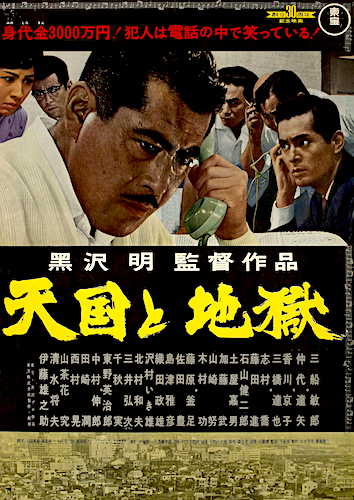














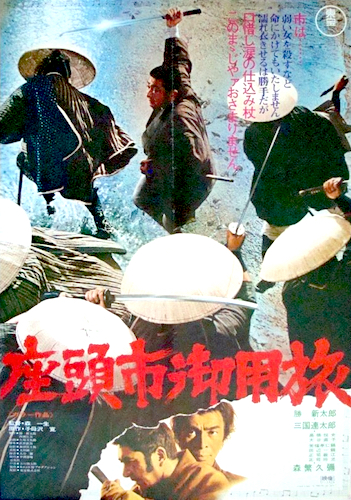
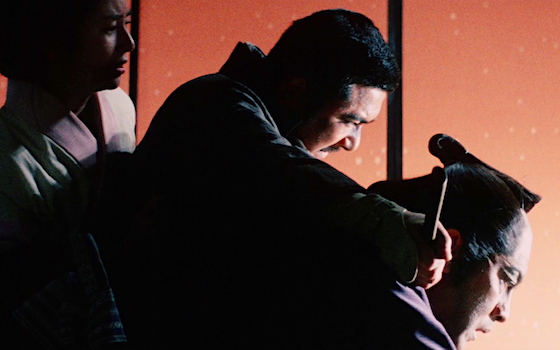
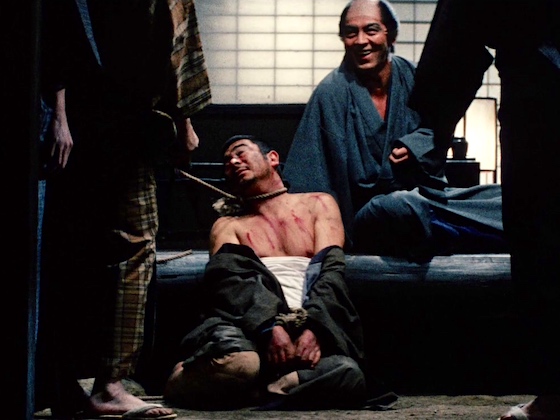
 On what you might unkindly call a superficial level, the third season of Netflix’s signature series was thoroughly entertaining — it’s frequently funny and exciting, with cool moments aplenty (especially in the last couple of episodes), and many enjoyable callbacks to both ’80s pop culture and within the show itself. But dig any deeper and it begins to seem less surefooted, with what felt to me like muddled themes and character arcs, and a sense that the mythology was treading water. I don’t particularly object to the way any characters were treated, nor the destinations any of them reached (especially as a fourth season was inevitable, so wherever this run finished up was only ever temporary), but I didn’t feel like they were being guided anywhere with any real purpose. There’s something to be said for storylines like that, but when you’re trying to play some kind of redemption arc, or a coming-of-age tale about burgeoning independence (or whatever), I feel like you need to be a bit clearer-eyed. But hey, I still enjoyed it a lot — it’s a fun watch, and I imagine even more so if you have nostalgic memories of an ’80s childhood — I just think there’s still some room for finessing.
On what you might unkindly call a superficial level, the third season of Netflix’s signature series was thoroughly entertaining — it’s frequently funny and exciting, with cool moments aplenty (especially in the last couple of episodes), and many enjoyable callbacks to both ’80s pop culture and within the show itself. But dig any deeper and it begins to seem less surefooted, with what felt to me like muddled themes and character arcs, and a sense that the mythology was treading water. I don’t particularly object to the way any characters were treated, nor the destinations any of them reached (especially as a fourth season was inevitable, so wherever this run finished up was only ever temporary), but I didn’t feel like they were being guided anywhere with any real purpose. There’s something to be said for storylines like that, but when you’re trying to play some kind of redemption arc, or a coming-of-age tale about burgeoning independence (or whatever), I feel like you need to be a bit clearer-eyed. But hey, I still enjoyed it a lot — it’s a fun watch, and I imagine even more so if you have nostalgic memories of an ’80s childhood — I just think there’s still some room for finessing. Alan Moore and Dave Gibbons’s graphic novel Watchmen is a seminal work of the form — I’m sure you don’t need me to tell you about that at this point. Over the past decade it’s been
Alan Moore and Dave Gibbons’s graphic novel Watchmen is a seminal work of the form — I’m sure you don’t need me to tell you about that at this point. Over the past decade it’s been  HBO and Sky Atlantic have teamed up for this lavish four-parter about the life of the famous Russian ruler, conceived by and starring Helen Mirren. The big bucks those broadcasters are known for are all over the screen here — it looks suitable sumptuous, with grand locations that positively shine, especially in UHD. Unfortunately, nothing else about the production is up to scratch. The writing is thoroughly mediocre — it most reminded me of The Tudors, although that seemed to know it was a bit of trashy fun, whereas I think Catherine the Great wants to be taken very seriously. But the dialogue is uninspiring, the characters uninteresting and underdeveloped (we’re told the relationship between Catherine and Potemkin is some great love affair, but they strop around like moody, jealous teenagers), and the flat performances do nothing to elevate any of it — and despite her general acclaim, Mirren is probably the weakest of the lot. Pretty, then, but vacant.
HBO and Sky Atlantic have teamed up for this lavish four-parter about the life of the famous Russian ruler, conceived by and starring Helen Mirren. The big bucks those broadcasters are known for are all over the screen here — it looks suitable sumptuous, with grand locations that positively shine, especially in UHD. Unfortunately, nothing else about the production is up to scratch. The writing is thoroughly mediocre — it most reminded me of The Tudors, although that seemed to know it was a bit of trashy fun, whereas I think Catherine the Great wants to be taken very seriously. But the dialogue is uninspiring, the characters uninteresting and underdeveloped (we’re told the relationship between Catherine and Potemkin is some great love affair, but they strop around like moody, jealous teenagers), and the flat performances do nothing to elevate any of it — and despite her general acclaim, Mirren is probably the weakest of the lot. Pretty, then, but vacant. The BBC’s 1970s policy of junking programmes because they supposedly no longer had commercial value is a familiar topic for Doctor Who fans, who’ve spent decades hoping and hunting for copies of missing episodes. But it was an organisation-wide policy, so Who was far from the only show that suffered — Dad’s Army was another. It’s a perennially popular sitcom here (even today repeats land among the most-watched programmes of the week), so you can see why it made commercial sense to invest in recreations of the missing episodes — especially as there’s only three of them.
The BBC’s 1970s policy of junking programmes because they supposedly no longer had commercial value is a familiar topic for Doctor Who fans, who’ve spent decades hoping and hunting for copies of missing episodes. But it was an organisation-wide policy, so Who was far from the only show that suffered — Dad’s Army was another. It’s a perennially popular sitcom here (even today repeats land among the most-watched programmes of the week), so you can see why it made commercial sense to invest in recreations of the missing episodes — especially as there’s only three of them.







